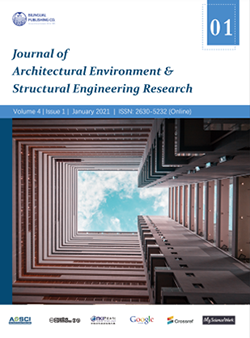-
371
-
208
-
183
-
179
-
168
The Impact of Nature, The Teaching and Learning of Elementary Lessons in Students 9-11 Years Old (Case Study: Shiraz Elementary Schools)
DOI:
https://doi.org/10.30564/jaeser.v4i1.2186Abstract
In today’s world some changes have been occurred in human lifestyle, these changes, along with the advantages, have led to a series of disadvantages including their disconnection with the nature. One of the most important areas to re-establish the relationship is the school. The presence of nature at schools, and holding some classes in nature, in addition to meeting the special needs of children causes their separation from those small and boring classes as well as their interest in courses . This study aimed to investigate the role of nature in children’s learning. For this purpose, third, fourth and fifth grade classes of 3 schools were held outside the school environment and in the nature in 5 courses. The study is a combinational research and field, indirect observation and library data collection methods were applied, where in the indirect observation, two types of questionnaires were prepared related to the students and teachers and were randomly distributed among 580 students and 50 elementary school teachers. Test reliability was assessed using Cronbach’s alpha and it was obtained to be 0.890. The results of this study indicate that the physical place as one of the factors in children’s learning has the maximum impact on teaching and learning of children. At the end of the study and by investigating the existing factors in the environment we understood that the expansion of the nature and natural light of it causes the students’ interest in lessons in nature.
Keywords:
Expansion of space; Nature; Physical environment of the class; Schools; Interest in lessonsReferences
[1] Van den Berg, Hartig, Staats. Health impacts of healing environments: A review of evidence for benefits of nature, daylight, fresh air, and quiet in healthcare settings. Groningen, 2007.
[2] Derek. B, Vinathe. Sh. Imagination in school children’s choice of their learning environmentt: International Journal of Educational Research, 2012.
[3] Birkett, D. The school I’d like: Here is what you wanted. UK: The Guardian (3 May, 2011). Retrieved from http://www.guardian.co.uk/education/2011/may/03/school-i-would-like, 2011.
[4] Laaksoharju, T., Rappe, E. Children’s relationship to plants among primary school children in Finland: comparisons by location and gender. HortTechnology, 2010, 20(4): 689-695.
[5] Coyle, K. Environmental literacy in America: What ten years of NEETF=Roper research and related studies say, 2005.
[6] Wells, N., Evans, G. Nearby nature: A buffer of life stress among rural children. Environment and Behavior, 2003, 35, 311-330.
[7] Christina. K, Gary. W, Evans. KR. A Multi-Methodological, Quasi-Experimental Study in Rural Austrian: Environment and Behavior, 2013.
[8] Wells, N. M., Lekies, K. S. Nature and the life course: Pathways from childhood nature experiences to adult environmentalism, Children, Youth and Environments, 2010, 16(1): 1-24.
[9] Taylor FA, Kuo FE. Children with attention deficits concentrate better after walk in the park. J Atten Disord, 2009, 12(5): 402-409.
[10] Tam, K. Dispositional empathy with nature. Journal of Environmental Psychology, 2013, 35, 92e104.
[11] Shaw, A. Education in the 21st century. Ethos, 2009, 11-19.
[12] Louv, R. Last child in the woods: Saving our children from nature-deficit disorder. Chapel Hill, NC: Algonquin. (Original work published 2006), 2008.
[13] Knight, S. Forest schools and outdoor learning in the early years. Thousand Oaks, CA: Sage, 2009, 48-55.
[14] Judith, C, Martha C. Connection to Nature: Children’s Affective Attitude Toward Nature: Environment and Behavior, 2012.
[15] Torquati, J, Cutler, K, Gilkerson, D, Sarver, S. Early Childhood Educators’ erceptions of Nature, Science, and Environmental Education, 2013.
[16] Higgins P., Nicol R. Outdoor Education, Authentic Learning in the context of Landscapes, 2012, 2.
[17] Ghaziani, R. Children’s voices: Raised issues for school design. CoDesign, 2008, 4(4): 225-236.
[18] Higgins, P., Nicol, R. Outdoor Education, Authentic Learning in the context of Landscapes, 2012, 2.
[19] Department of Education and Early Childhood Development, Victoria. Victorian School Design, 2008.
[20] Birkett, D. The school I’d like: Here is what you wanted. UK: The Guardian, 2011. Retrieved from: http://www.guardian.co.uk/education/2011/may/03/school-i-would-like
[21] Cynthia Mc, Frantz E.B., Senecal, K .D. The Role of Connectedness, 2008.
[22] Chawla, L. Childhood experiences associated with care for the natural world: A theoretical framework for empirical results. Children, Youth and Environments,17, 144-170. ntalism, Children, Youth and Environments, 2007,16(1):1-24.
Downloads
How to Cite
Issue
Article Type
License
Copyright © 2021 Neda Mohammadi,Sayyid Rasool Keshavarz, Zahra Darabi

This is an open access article under the Creative Commons Attribution-NonCommercial 4.0 International (CC BY-NC 4.0) License.




 Neda Mohammadi
Neda Mohammadi





